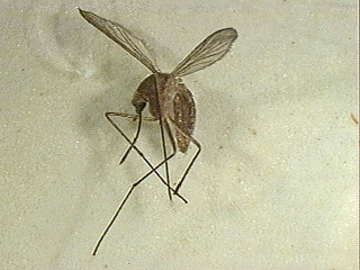"I think it's very unlikely that it was an engineered virus. It looks much more like there are sequences very similar in another part of the world, but that doesn't tell us anything about how it might have been introduced. And that is obviously cause for some concern."
- W. Ian Lipkin, M.D., Univ. of California at Irvine -
November 15, 1999 University of California-Irvine By the time the first frost touched Philadelphia this fall, dead crows and other birds in a couple of suburbs had been sent to laboratories to see if the Kunjin West Nile Fever Virus had spread from New Jersey, New York and Connecticut. The Pennsylvania test results are due soon and public health officials are concerned about the implications for next spring and summer. For the first time in history, this virus strain normally found only in Africa, Australia, the Middle East and Eurasia showed up in the United States. Fifty-six people in New York City were infected with the foreign virus and seven died, along with dozens of crows that are especially sensitive to the West Nile Virus. Transmission of the disease is through ticks, mites or mosquitoes that bite birds. Bird blood fills up with the virus rapidly over several days. During that time, insects can bite infected birds and then bite a human who can also become ill.

Click here to subscribe and get instant access to read this report.
Click here to check your existing subscription status.
Existing members, login below:
© 1998 - 2025 by Linda Moulton Howe.
All Rights Reserved.

